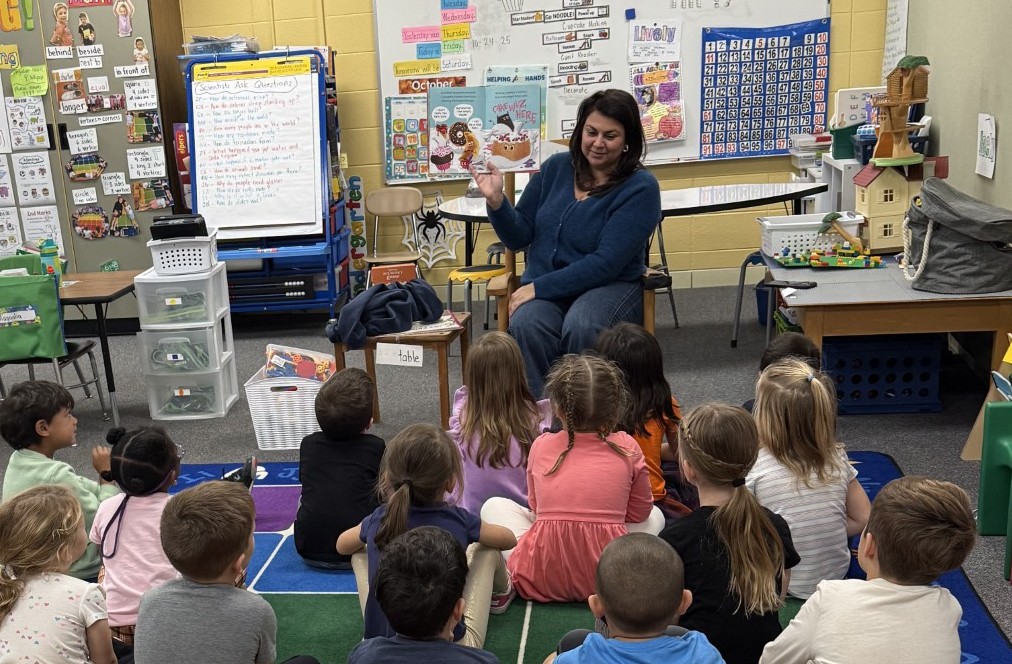How AI Can Help With Executive Coaching
AI programs can work wonders with teachers and menial school tasks, but it can also help to expand executive coaching within the educational space.

The AI conversation in regard to education normally revolves around two pillars: the classroom and school processes. AI tools are generally thought of as helpers to get tasks done faster or more efficiently. However, we rarely hear about AI tools helping the decision-makers in education.
The benefits of continued coaching for educational executives run deep, and implementing a program in your school or district can help to keep educational decision-makers at their occupational peak.
“The whole thing about executive coaching is being able to help leaders realize their potential, not only for their schools, but for themselves, so that they can build up themselves, their schools, their departments, or whatever they’re working toward,” says Greg Bagby, Coordinator of Instructional Technology and edtech coach at Hamilton County Department of Education in Tennessee. “Whether it’s LeBron [James] or [another athlete], they always have coaches. The folks at the top, they have coaches, and we should do the same thing inside of the educational space. We have academic coaches that work with teachers, but we should also have coaches working with the folks that are leading.”
Bagby describes how AI can be used to create ongoing executive coaching opportunities, how the human element can keep AI honest and useful, and the tools you can use to create a similar situation in your school or district.
AI, The Executive Coaching Answer?
Coaching on the executive level can help keep education leaders on top of their professions, train them on processes and tools they might not know, and prepare them for whatever situations they might run into, making them capable of helping teachers in innovative and meaningful ways. But how does AI fit into the equation?
“When you implement something like coaching with AI, you get the ability to not only ask questions, [you can also] collect data from that person and then use AI to analyze it in real time,” says Bagby. “They can use platforms like Chat GPT or [Microsoft] CoPilot to do immediate data analysis. Then you can think about how to help that person grow.”
You can also build and train an AI chatbot on educational leadership data to help personalize guidance and recommend specific learning resources. Of course, human oversight is necessary with any AI tools used to assist in executive coaching.
Tools and ideas to transform education. Sign up below.
“I try to explain that the AI is not actually doing the coaching,” says Bagby. “I’m doing the thinking, and I don’t say that I’m just using AI to generate all of this. We talk about how we’re using the AI tools to gather some more ideas and even set some of the [coaching] up.”
But what if someone has an issue with coaching that has an AI element?
“You have to build trust,” says Bagby. “Trust is a must. You have to build trust with the folks that you’re going to work with. By building that trust, you have to make sure you’re a confidant.”
Coaching can evoke some feelings of insecurity in a professional, and AI might only exasperate those feelings. Reinforcing the human aspect of trust can help to circumvent some of those negative feelings and keep the coaching system on the right track.
How to Implement AI Based Coaching In Your Educational Space
Creating an AI chatbot and feeding it information might not sound difficult, but when it comes to implementing such a system and making sure it works, there are some best practices to ensure success.
“First, familiarizing themselves with coaching in general [is important],” says Bagby. “If you know someone who’s doing it, you can talk to them. Reach out to folks just to make sure it’s something that you really want to do.”
Next, vet and choose a coaching program.
“I would say find a coaching program that they can go through,” says Bagby. “Be it the free Apple coach, and there’s some coaching things on Microsoft that you can go through for free. Find a free program that you can go through.
Finally, having a background in administration can help.
“I would suggest that if you’re going to do it, make sure that you have had administrative experience as well,” says Bagby. “Principals are more likely to talk to, understand, and listen to other folks that have either been in their positions, or that are above their positions, or that have worked with folks consistently in those positions.”
Building trust, familiarizing yourself with the coaching process, and finding the right coaching program can all help in positioning an AI-based coaching program to maximize coaching effectiveness within an educational space.

Michael Millington is a senior staff writer for Tech & Learning. A writer and editor with over a decade of experience, his focus on bringing actionable information to those in need is the driving force behind his work. When not researching new advancements in technology, Michael likes to practice his Italian and train his dog Cyril.
